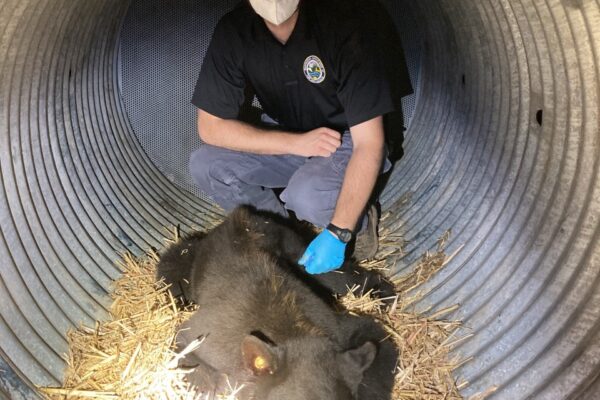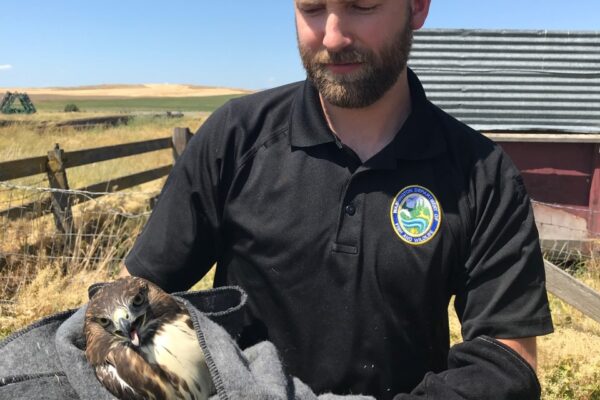Deep in the woods of rural Washington, a hunter and his son return to a 12-foot-deep sinkhole they discovered the previous year. To their surprise, an elk calf is trapped at the bottom of the pit. Springing into action, the hunter contacts the Washington Department of Fish and Wildlife, who deploys Todd Jacobsen ’17. With the help of a tractor and dart gun, he lifts the elk out to safety.
It’s just another day’s work for Jacobsen, a wildlife conflict specialist for Klickitat, Skamania and Clark Counties with the Washington Department of Fish and Wildlife.
“Every year, I end up involved in several ‘entangled’ deer or elk calls where these animals have become wrapped up in some sort of fence, or gotten some man-made object stuck somewhere on their body that impedes their ability to move or eat,” said Jacobsen.
In one instance, he had to “dart” a deer to remove a Kong dog chew toy that had gotten stuck around its mouth, prohibiting it from eating. Incidents like this are only a small portion of his work, though. An ordinary day on the job could include fending off bears from industrial timber operations, euthanizing sick or injured wildlife or even cleaning up the aftermath of destructive turkeys.
“There are roughly 17 conflict specialists around the state. Our primary duties entail dealing with elk and deer damage to commercial crops, handling wolf, bear and cougar depredations on livestock, and responding with our enforcement staff to cougar, bear and moose incidents.”
Jacobsen’s department focuses heavily on implementing non-lethal hazing and deterrent tools to mitigate most conflict scenarios, though he said there are times when lethal removal of wildlife is also necessary to resolve certain conflicts.
Following his graduation from SPU in 2010, he taught natural resources at his former high school, applied for graduate school research positions and worked as a field technician to monitor bighorn sheep populations in central Idaho for the Nez Perce Tribe.
In 2013, he accepted an offer for a fully funded master’s degree research assistantship in Dr. Steve Ditchkoff’s Deer Lab at Auburn University. For the next three years, he and his colleague, Kevin Wiskirshen, captured and collared white-tail deer to examine deer survival and movement across the state of Alabama.
“My time at Auburn was definitely instrumental in preparing me for a career in wildlife conservation and management,” said Jacobsen. “I gained valuable field research experience while working in the Deer Lab, primarily revolving around wildlife capture and handling.”
In June of 2016, Jacobsen’s experience was put to the test when a black bear was found wandering around a neighborhood near downtown Opelika. Because Ditchkoff’s Deer Lab at Auburn housed extensive wildlife-capturing equipment, the state contacted his office for the job.
So Jacobsen, Ditchkoff and Wiskirshen left a calm day at the Deer Lab to go track down the bear.
“It was a large black bear, a male probably looking for a breeding opportunity, and there aren’t many bears in Alabama, so he was going to be looking for a long time before he found another black bear.”
(Written by Catherine Haynes)












